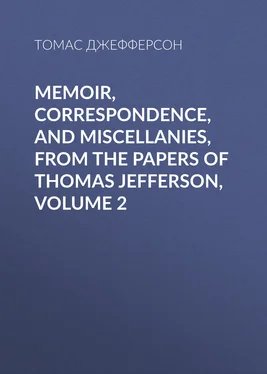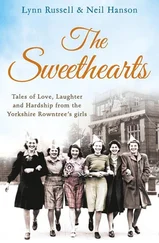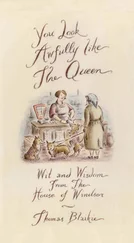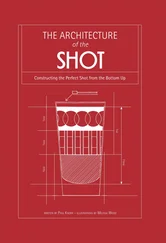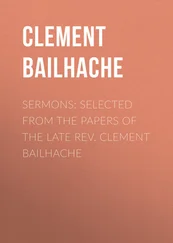Томас Джефферсон - Memoir, Correspondence, And Miscellanies, From The Papers Of Thomas Jefferson, Volume 2
Здесь есть возможность читать онлайн «Томас Джефферсон - Memoir, Correspondence, And Miscellanies, From The Papers Of Thomas Jefferson, Volume 2» — ознакомительный отрывок электронной книги совершенно бесплатно, а после прочтения отрывка купить полную версию. В некоторых случаях можно слушать аудио, скачать через торрент в формате fb2 и присутствует краткое содержание. Жанр: foreign_prose, История, foreign_edu, foreign_antique, на английском языке. Описание произведения, (предисловие) а так же отзывы посетителей доступны на портале библиотеки ЛибКат.
- Название:Memoir, Correspondence, And Miscellanies, From The Papers Of Thomas Jefferson, Volume 2
- Автор:
- Жанр:
- Год:неизвестен
- ISBN:нет данных
- Рейтинг книги:4 / 5. Голосов: 1
-
Избранное:Добавить в избранное
- Отзывы:
-
Ваша оценка:
- 80
- 1
- 2
- 3
- 4
- 5
Memoir, Correspondence, And Miscellanies, From The Papers Of Thomas Jefferson, Volume 2: краткое содержание, описание и аннотация
Предлагаем к чтению аннотацию, описание, краткое содержание или предисловие (зависит от того, что написал сам автор книги «Memoir, Correspondence, And Miscellanies, From The Papers Of Thomas Jefferson, Volume 2»). Если вы не нашли необходимую информацию о книге — напишите в комментариях, мы постараемся отыскать её.
Memoir, Correspondence, And Miscellanies, From The Papers Of Thomas Jefferson, Volume 2 — читать онлайн ознакомительный отрывок
Ниже представлен текст книги, разбитый по страницам. Система сохранения места последней прочитанной страницы, позволяет с удобством читать онлайн бесплатно книгу «Memoir, Correspondence, And Miscellanies, From The Papers Of Thomas Jefferson, Volume 2», без необходимости каждый раз заново искать на чём Вы остановились. Поставьте закладку, и сможете в любой момент перейти на страницу, на которой закончили чтение.
Интервал:
Закладка:
The people are well clothed, but it is Sunday. They have the appearance of being well fed. The Chateau de Sevigny, near Cussy-les-Forges, is a charming situation. Between Maison-neuve and Vitteaux the road leads through an avenue of trees, eight American miles long, in a right line. It is impossible to paint the ennui of this avenue. On the summits of the hills, which border the valley in which Vitteaux is, there is a parapet of rock, twenty, thirty, or forty feet perpendicular, which crowns the hills. The tops are nearly level, and appear to be covered with earth. Very singular. Great masses of rock in the hills between La Chaleure and Pont de Panis, and a conical hill in the approach to the last place.
Dijon . The tavern price of a bottle of the best wine (e. g. of Vaune) is four livres. The best round potatoes here, I ever saw. They have begun a canal thirty feet wide, which is to lead into the Saone at –. It is fed by springs. They are not allowed to take any water out of the riviere d’Ouche, which runs through this place, on account of the mills on that river. They talk of making a canal to the Seine, the nearest navigable part of which, at present, is fifteen leagues from hence. They have very light wagons here for the transportation of their wine. They are long and narrow; the fore-wheels as high as the hind. Two pieces of wine are drawn by one horse in one of these wagons. The road in this part of the country is divided into portions of forty or fifty feet by stones, numbered, which mark the task of the laborers.
March 7 and 8. From La Baraque to Chagny . On the left are plains, which extend to the Saone; on the right the ridge of mountains, called the Cote. The plains are of a reddish-brown, rich loam, mixed with much small stone. The Cote has for its basis a solid rock, on which is about a foot of soil and small stone, in equal quantities, the soil red, and of middling quality. The plains are in corn; the Cote in vines. The former have no enclosures, the latter is in small ones, of dry stone wall. There is a good deal of forest. Some small herds of small cattle and sheep. Fine mules, which come from Provence, and cost twenty louis. They break them at two years old, and they last to thirty.
The corn-lands here rent for about fifteen livres the arpent. They are now planting, pruning, and sticking their vines. When a new vineyard is made, they plant the vines in gutters about four feet apart. As the vines advance, they lay them down. They put out new shoots, and fill all the intermediate space, till all trace of order is lost. They have ultimately about one foot square to each vine. They begin to yield good profit at five or six years old, and last one hundred, or one hundred and fifty years. A vigneron at Volnay carried me into his vineyard, which was of about ten arpents. He told me, that some years it produced him sixty pieces of wine, and some not more than three pieces. The latter is the most advantageous produce, because the wine is better in quality, and higher in price, in proportion as less is made; and the expenses, at the same time, diminish in the same proportion. Whereas, when much is made, the expenses are increased, while the quality and price become less. In very plentiful years, they often give one half the wine for casks to contain the other half. The cask for two hundred and fifty bottles costs six livres in scarce years, and ten in plentiful. The feuillette is of one hundred and twenty-five bottles, the piece of two hundred and fifty, and the queue or botte of five hundred. An arpent rents at from twenty to sixty livres. A farmer of ten arpents has about three laborers engaged by the year. He pays four louis to a man, and half as much to a woman, and feeds them. He kills one hog, and salts it, which is all the meat used in the family during the year. Their ordinary food is bread and vegetables. At Pomard and Volnay, I observed them eating good wheat bread; at Meursault, rye. I asked the reason of the difference. They told me, that the white wines fail in quality much oftener than the red, and remain on hand. The farmer, therefore, cannot afford to feed his laborers so well. At Meursault only white wines are made, because there is too much stone for the red. On such slight circumstances depends the condition of man! The wines which have given such celebrity to Burgundy grow only on the Cote, an extent of about five leagues long, and half a league wide. They begin at Chambertin, and go through Vougeau, Romanie, Veaune, Nuits, Beaune, Pomard, Volnay, Meursault, and end at Monrachet. Those of the two last are white; the others red. Chambertin, Vougeau, and Beaune are the strongest, and will bear transportation and keeping. They sell, therefore, on the spot for twelve hundred livres the queue, which is forty-eight sous the bottle. Volnay is the best of the other reds, equal in flavor to Chambertin, &c., but being lighter, will not keep, and therefore sells for not more than three hundred livres the queue, which is twelve sous the bottle. It ripens sooner than they do, and consequently is better for those who wish to broach at a year old. In like manner of the white wines, and for the same reason, Monrachet sells for twelve hundred livres the queue (forty-eight sous the bottle), and Meursault of the best quality, viz. the Goutte d’or , at only one hundred and fifty livres (six sous the bottle). It is remarkable, that the best of each kind, that is, of the red and white, is made at the extremities of the line, to wit, at Chambertin and Monrachet. It is pretended, that the adjoining vineyards produce the same qualities, but that, belonging to obscure individuals, they have not obtained a name, and therefore sell as other wines. The aspect of the Cote is a little south of east. The western side is also covered with vines, and is apparently of the same soil; yet the wines are only of the coarsest kinds. Such, too, are those which are produced in the plains; but there the soil is richer, and less strong. Vougeau is the property of the monks of Citeaux, and produces about two hundred pieces. Monrachet contains about fifty arpents, and produces, one year with another, about one hundred and twenty pieces. It belongs to two proprietors only, Monsieur de Clarmont, who leases to some wine-merchants, and the Marquis de Sarsnet, of Dijon, whose part is farmed to a Monsieur de la Tour, whose family, for many generations, have had the farm. The best wines are carried to Paris by land. The transportation costs thirty-six livres the piece. The more indifferent go by water. Bottles cost four and a half sous each.
March 9. Chalons. Sennecey. Tournus. St. Albin. Macon. On the left are the fine plains of the Saone; on the right high lands, rather waving than hilly, sometimes sloping gently to the plains, sometimes dropping down in precipices, and occasionally broken into beautiful vallies[sp.] by the streams which run into the Saone. The plains are a dark rich loam, in pasture and corn; the heights more or less red or reddish, always gritty, of middling quality only, their sides in vines, and their summits in corn. The vineyards are enclosed with dry stone-walls, and there are some quick-hedges in the corn-grounds. The cattle are few and indifferent. There are some good oxen, however. They draw by the head. Few sheep, and small. A good deal of wood-lands.
I passed three times the canal called Le Charollois, which they are opening from Chalons on the Saone to Dijon on the Loire. It passes near Chagny, and will be twenty-three leagues long. They have worked on it three years, and will finish it in four more. It will reanimate the languishing commerce of Champagne and Burgundy, by furnishing a water transportation for their wines to Nantes, which also will receive new consequence by becoming the emporium of that commerce. At some distance on the right are high mountains, which probably form the separation between the waters of the Saone and Loire. Met a malefactor in the hands of one of the Marichausee; perhaps a dove in the talons of the hawk. The people begin now to be in separate establishments, and not in villages. Houses are mostly covered with tile.
Читать дальшеИнтервал:
Закладка:
Похожие книги на «Memoir, Correspondence, And Miscellanies, From The Papers Of Thomas Jefferson, Volume 2»
Представляем Вашему вниманию похожие книги на «Memoir, Correspondence, And Miscellanies, From The Papers Of Thomas Jefferson, Volume 2» списком для выбора. Мы отобрали схожую по названию и смыслу литературу в надежде предоставить читателям больше вариантов отыскать новые, интересные, ещё непрочитанные произведения.
Обсуждение, отзывы о книге «Memoir, Correspondence, And Miscellanies, From The Papers Of Thomas Jefferson, Volume 2» и просто собственные мнения читателей. Оставьте ваши комментарии, напишите, что Вы думаете о произведении, его смысле или главных героях. Укажите что конкретно понравилось, а что нет, и почему Вы так считаете.
